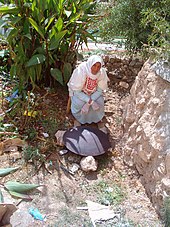11 BBF-2 Chamie Baesa . 2nd Blog
- Get link
- X
- Other Apps
My Baking Blog
Foods and techniques[edit]
All types of food can be baked, but some require special care and protection from direct heat. Various techniques have been developed to provide this protection.
In addition to bread, baking is used to prepare cakes, pastries, pies, tarts, quiches, cookies, scones, crackers, pretzels, and more. These popular items are known collectively as "baked goods," and are often sold at a bakery, which is a store that carries only baked goods, or at markets, grocery stores, farmers markets or through other venues.
Meat, including cured meats, such as ham can also be baked, but baking is usually reserved for meatloaf, smaller cuts of whole meats, or whole meats that contain stuffing or coating such as bread crumbs or buttermilk batter. Some foods are surrounded with moisture during baking by placing a small amount of liquid (such as water or broth) in the bottom of a closed pan, and letting it steam up around the food. Roasting is a term synonymous with baking, but traditionally denotes the cooking of whole animals or major cuts through exposure to dry heat; for instance, one bakes chicken parts but roasts the whole bird. One can bake pork or lamb chops but roasts the whole loin or leg. There are many exceptions to this rule of the two terms. Baking and roasting otherwise involve the same range of cooking times and temperatures. Another form of baking is the method known as en croûte (French for "in crust", referring to a pastry crust), which protects the food from direct heat and seals the natural juices inside. Meat, poultry, game, fish or vegetables can be prepared by baking en croûte. Well-known examples include Beef Wellington, where the beef is encased in pastry before baking; pâté en croûte, where the terrine is encased in pastry before baking; and the Vietnamese variant, a meat-filled pastry called pâté chaud. The en croûte method also allows meat to be baked by burying it in the embers of a fire – a favorite method of cooking venison. Salt can also be used to make a protective crust that is not eaten. Another method of protecting food from the heat while it is baking is to cook it en papillote (French for "in parchment"). In this method, the food is covered by baking paper (or aluminum foil) to protect it while it is being baked. The cooked parcel of food is sometimes served unopened, allowing diners to discover the contents for themselves which adds an element of surprise.
- Get link
- X
- Other Apps

/high-angle-view-of-multi-colored-baking-devices-692741553-5a1f2e32eb4d52001aed7d72.jpg)

Comments
Post a Comment